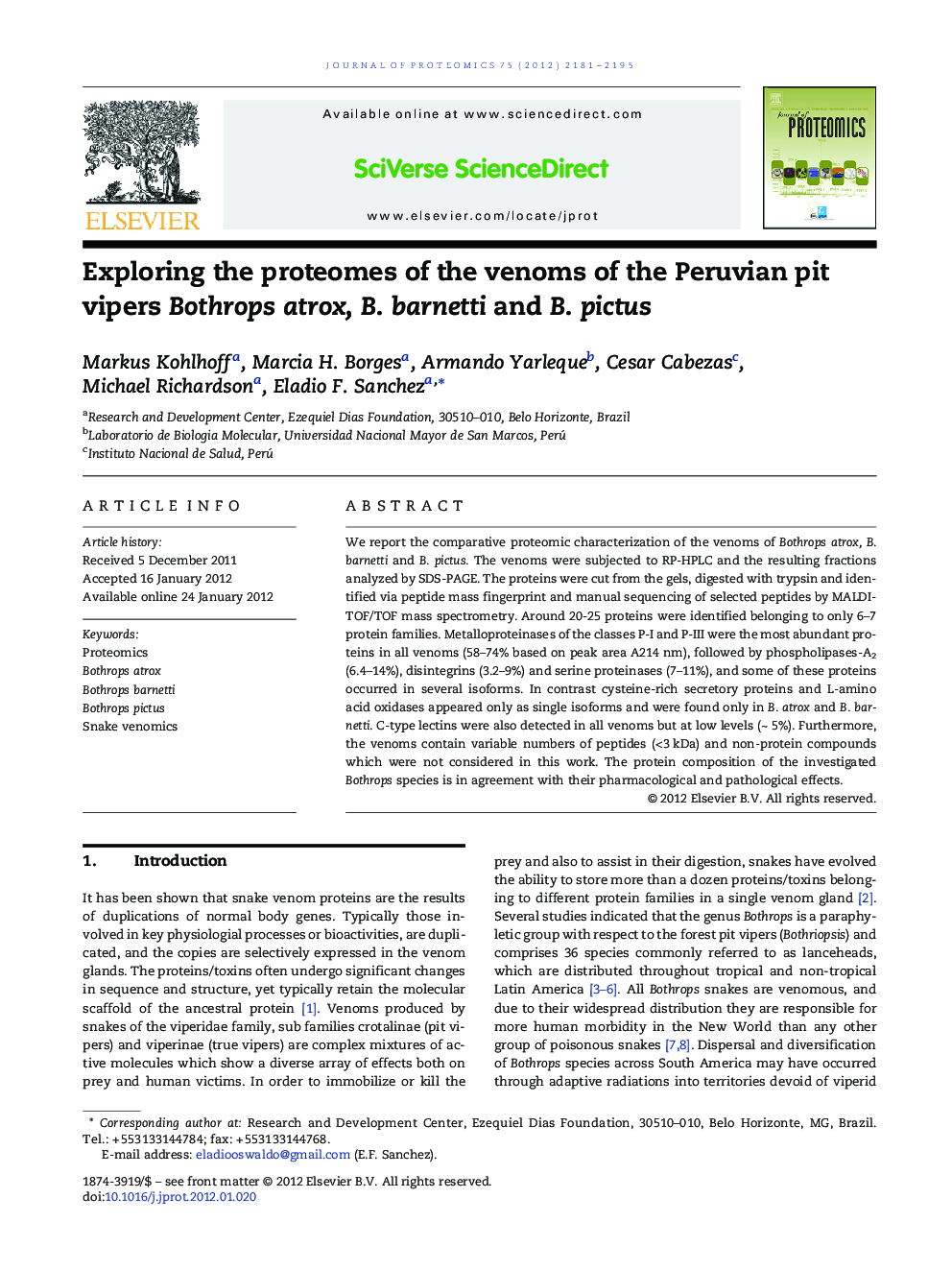| Article ID | Journal | Published Year | Pages | File Type |
|---|---|---|---|---|
| 1225959 | Journal of Proteomics | 2012 | 15 Pages |
We report the comparative proteomic characterization of the venoms of Bothrops atrox, B. barnetti and B. pictus. The venoms were subjected to RP-HPLC and the resulting fractions analyzed by SDS-PAGE. The proteins were cut from the gels, digested with trypsin and identified via peptide mass fingerprint and manual sequencing of selected peptides by MALDI-TOF/TOF mass spectrometry. Around 20-25 proteins were identified belonging to only 6–7 protein families. Metalloproteinases of the classes P-I and P-III were the most abundant proteins in all venoms (58–74% based on peak area A214 nm), followed by phospholipases-A2 (6.4–14%), disintegrins (3.2–9%) and serine proteinases (7–11%), and some of these proteins occurred in several isoforms. In contrast cysteine-rich secretory proteins and L-amino acid oxidases appeared only as single isoforms and were found only in B. atrox and B. barnetti. C-type lectins were also detected in all venoms but at low levels (~ 5%). Furthermore, the venoms contain variable numbers of peptides (< 3 kDa) and non-protein compounds which were not considered in this work. The protein composition of the investigated Bothrops species is in agreement with their pharmacological and pathological effects.
Graphical abstractFigure optionsDownload full-size imageDownload high-quality image (158 K)Download as PowerPoint slideHighlights►Venom proteomes of the Peruvian pit vipers Bothrops atrox, B. barnetti and B. pictus were investigated. ►Metalloproteinases of the P-III and P-I classes are the predominant proteins in these venoms. ►The protein composition of the analyzed Bothrops species is in agreement with their pharmacological and pathological effects.
